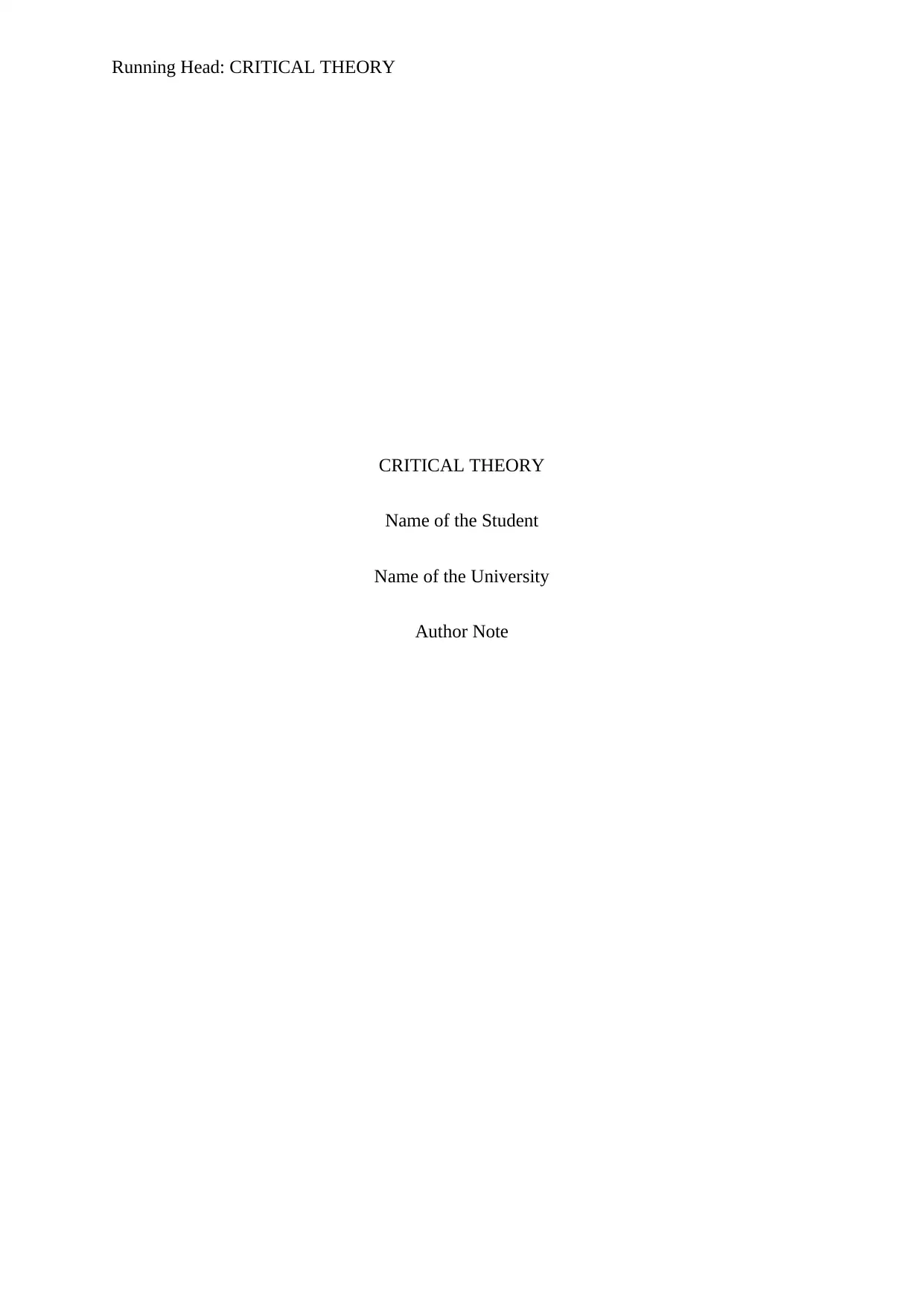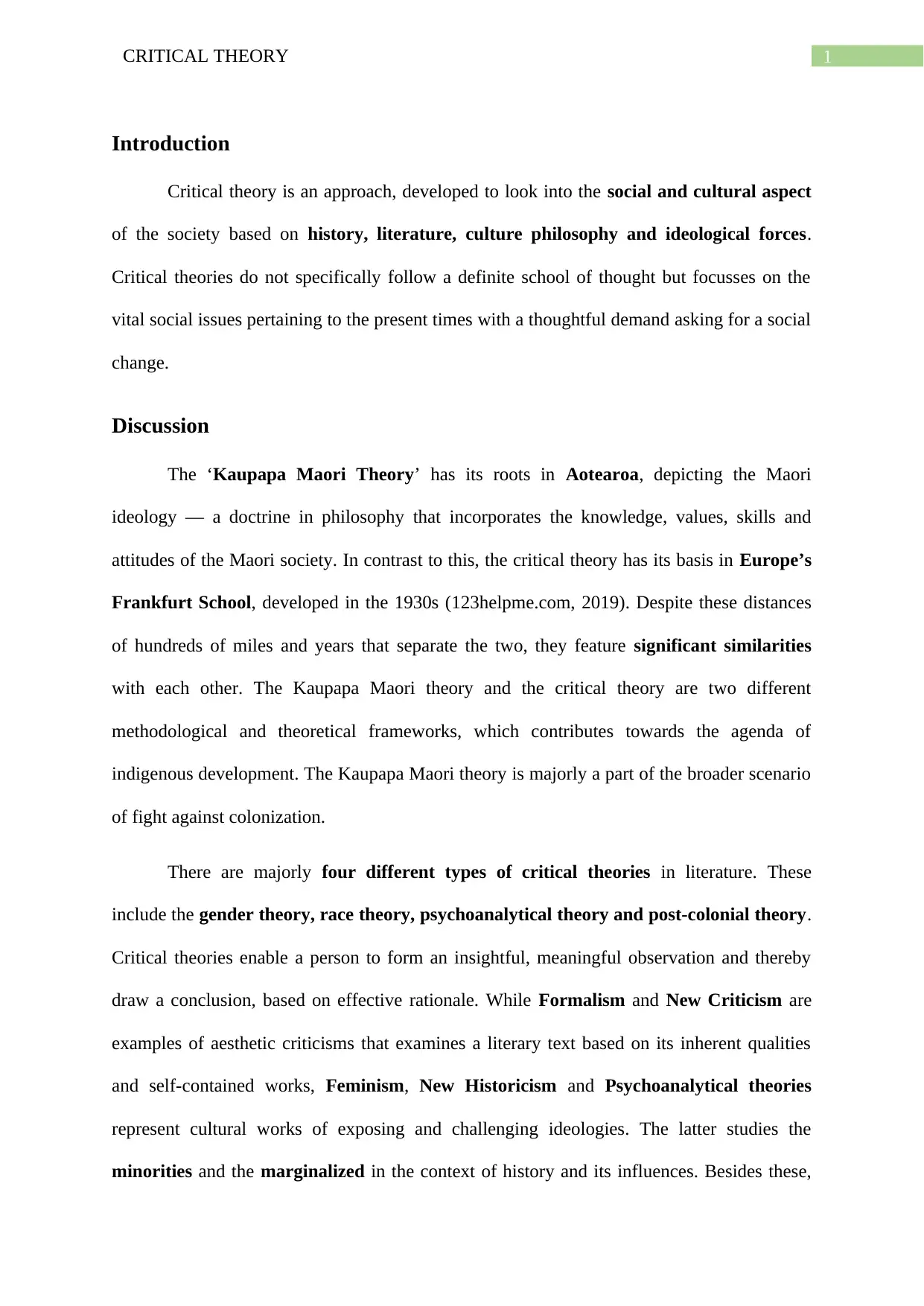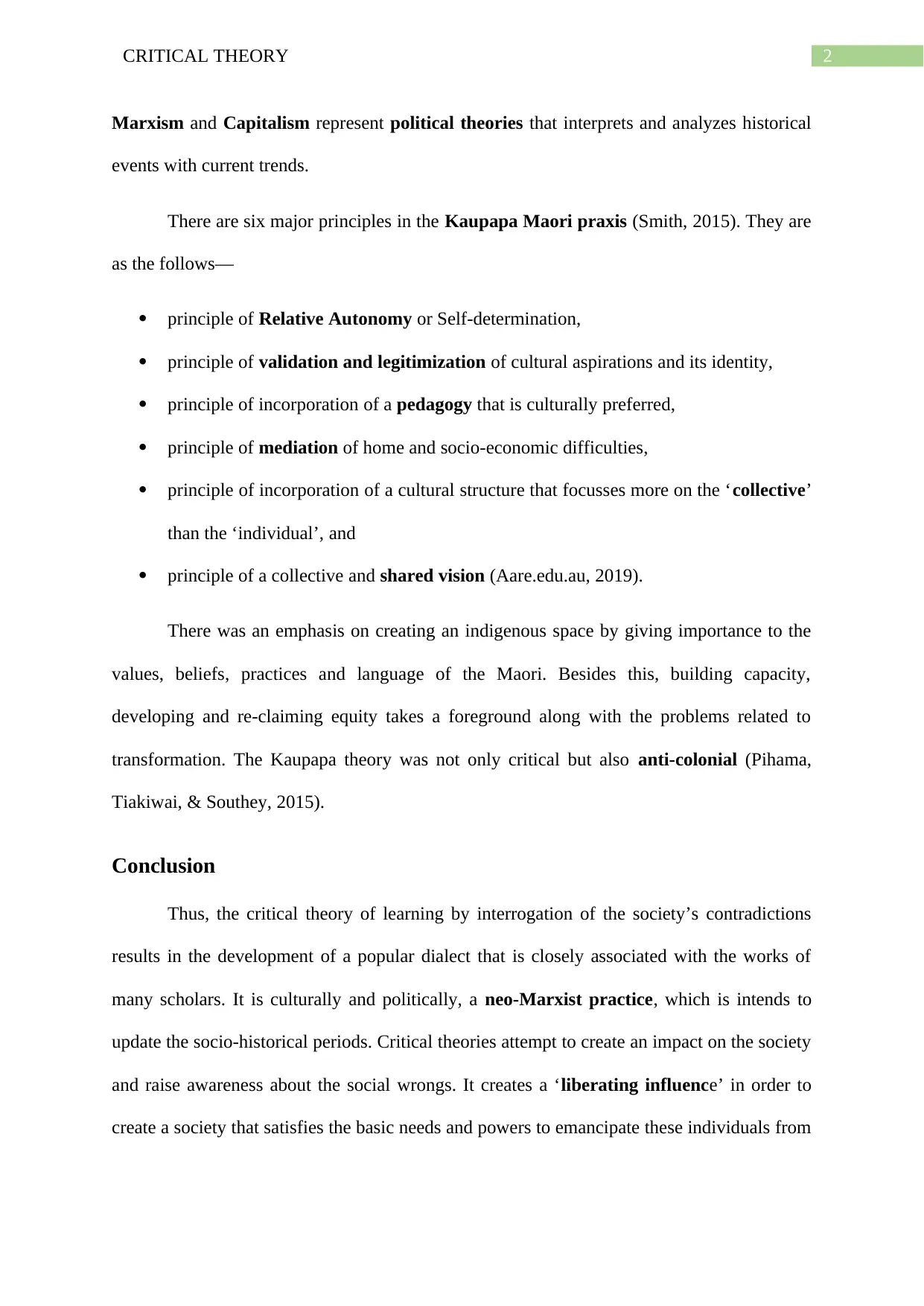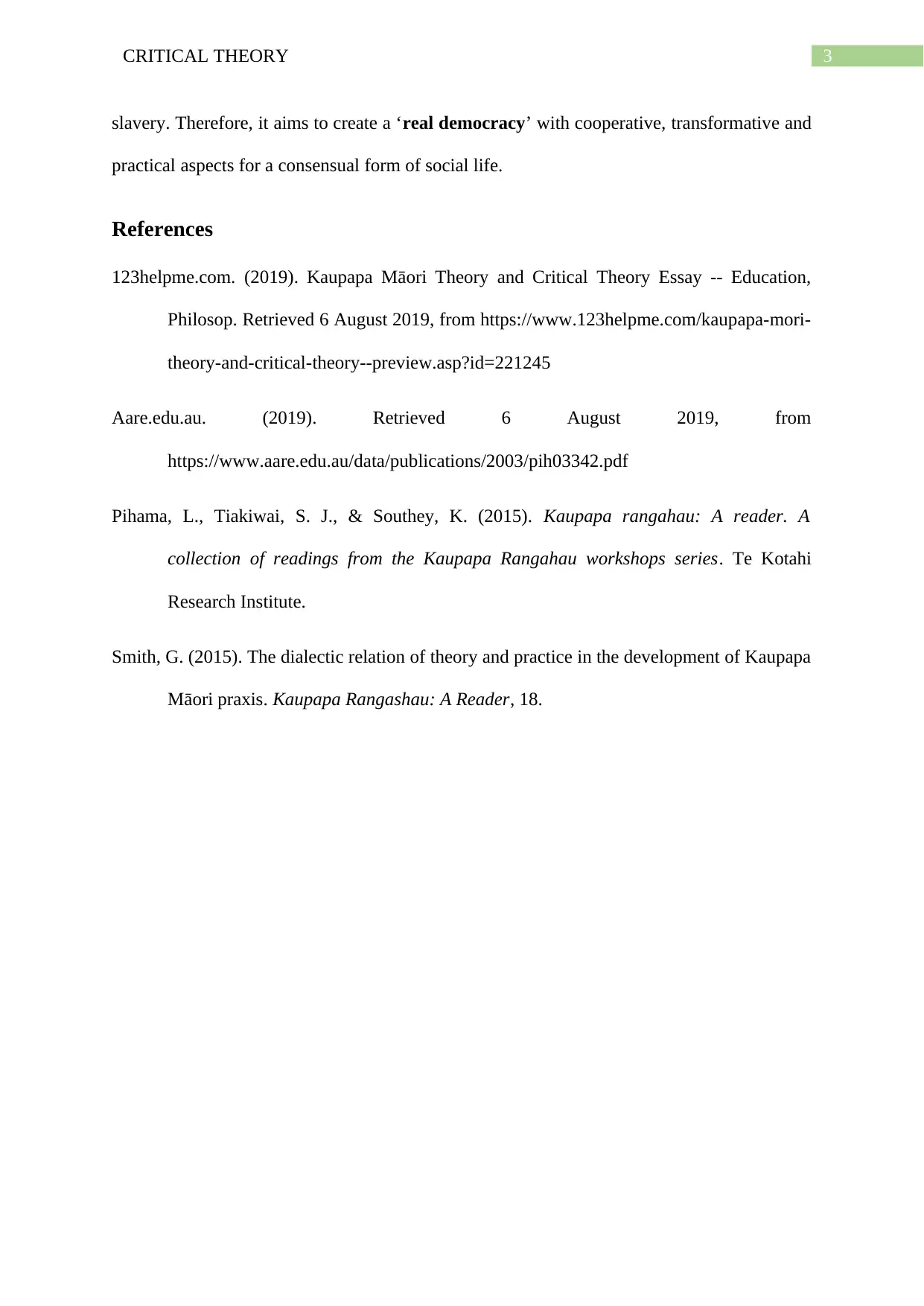Critical Theory: Maori Theory and Critical Theory Comparison Essay
VerifiedAdded on 2022/10/10
|5
|745
|14
Essay
AI Summary
This essay provides an in-depth analysis of critical theory, particularly focusing on a comparative study between the Kaupapa Maori theory and critical theory rooted in the Frankfurt School. It begins by introducing critical theory as an approach that examines social and cultural aspects of society, emphasizing the need for social change. The essay then explores the Kaupapa Maori theory, originating in Aotearoa, and its emphasis on Maori ideology, contrasting it with the European-based critical theory developed in the 1930s. Despite their geographical and temporal differences, the essay highlights the significant similarities between these two frameworks. The discussion covers the four types of critical theories in literature, including gender, race, psychoanalytical, and post-colonial theories. It also details the six major principles of Kaupapa Maori praxis, such as self-determination, cultural validation, and collective vision. The essay concludes by emphasizing the critical theory's role in raising awareness about social issues and its aim to create a more equitable society. It references key sources to support its arguments, making it a comprehensive resource for understanding these theoretical frameworks.
1 out of 5









![[object Object]](/_next/static/media/star-bottom.7253800d.svg)